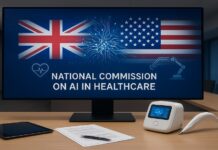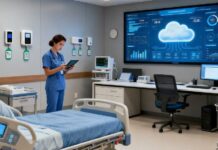Beyond the Boardroom: Personal Security Strategies for Hospital Executives
Hospital executives face unique risks—from data leaks to physical threats during public engagements. The contemporary healthcare leadership environment demands security measures that extend far beyond traditional corporate protection, encompassing digital vulnerabilities, travel risks, and the complex intersection of public visibility with personal safety.
The Evolving Threat Landscape for Healthcare Leadership
The security challenges facing hospital executives have transformed dramatically in recent years. What once constituted relatively low-profile roles have evolved into positions of intense public scrutiny and, increasingly, personal risk. The tragic December 2024 incident involving a healthcare CEO catalyzed urgent reassessment across the industry, with organizations dramatically increasing security expenditures and implementing comprehensive executive protection programs. This watershed moment revealed how perception, policy decisions, and public frustration can converge to create genuine threats to healthcare leaders.
Hospital executive security encompasses multiple dimensions that traditional corporate security frameworks often overlook. Healthcare leaders navigate uniquely challenging environments where they must balance accessibility to patients, staff, and community stakeholders against legitimate security concerns. Unlike executives in many industries who can maintain distance from public-facing operations, hospital administrators often walk floors, attend community events, and maintain visible presence as part of their leadership responsibilities.
The threat matrix facing healthcare executives includes cyber attacks, physical violence, harassment, stalking, and threats to family members. Recent analysis indicates that healthcare has experienced the highest average data breach costs of any sector for twelve consecutive years, with incidents averaging $9.77 million. These breaches often begin with attacks targeting executives through phishing campaigns, social engineering, or exploitation of personal information available through public sources and data brokers.
Understanding Executive-Specific Risk Profiles
Effective hospital executive security begins with comprehensive risk assessment that accounts for individual exposure factors. Not every executive carries identical risk profiles; threat levels vary based on organizational role, public visibility, controversial decisions, compensation visibility, and geographic location. The International Association for Healthcare Security and Safety recommends determining executive protection needs through Security Vulnerability Assessments or active threat analysis by Threat Management Teams.
Public profile considerations significantly influence risk calculations. Executives whose decisions affect care access, insurance coverage, or facility closures face elevated threat levels compared to those in purely operational roles. Media coverage amplifies visibility, particularly when reporting focuses on controversial topics such as denied claims, facility downsizing, or contentious labor negotiations. Healthcare leaders must recognize that their symbolic role—representing institutional policies and decisions—can attract displaced anger or ideologically motivated threats regardless of their personal involvement in specific situations.
Compensation transparency creates additional vulnerability. When executive salaries become public knowledge through regulatory filings, tax documents, or media reporting, they can generate negative public opinion and unwanted attention. This visibility combines with healthcare’s mission-driven culture to create perception gaps between executive compensation and patient care quality, potentially motivating both criminal activity and ideologically driven threats.
Geographic and facility-specific factors influence executive risk profiles. Leaders of urban hospitals face different threat patterns than those leading rural facilities. Institutions experiencing financial challenges, labor disputes, or quality-of-care controversies create elevated risk environments for their leadership teams. Executives must continuously reassess their risk profiles as organizational and environmental factors evolve.
Travel Security for Mobile Healthcare Leaders
Healthcare executives maintain demanding travel schedules for conferences, site visits, regulatory meetings, and industry engagements. Each journey creates security vulnerabilities that require careful management through advance planning, situational awareness, and appropriate protective measures. Executive travel security has evolved into a specialized discipline that addresses both physical safety and digital security throughout the travel lifecycle.
Pre-travel risk assessment forms the foundation of secure executive mobility. This process evaluates destination-specific threats including crime rates, political stability, health risks, and infrastructure vulnerabilities. For international travel, assessments must consider geopolitical factors, local attitudes toward Western healthcare companies, and region-specific cyber threats. Security teams should review recent incident reports, consult with local security providers, and establish emergency protocols before executives depart.
Transportation represents a critical vulnerability in executive travel. The predictability of routes between hotels, conference venues, and airports creates opportunities for surveillance and potential attacks. Varied transportation routes, inconspicuous vehicles, and professional security drivers help mitigate these risks. Executives should avoid sharing detailed itineraries on social media or through unsecured communications that could reveal their locations and movement patterns.
Accommodation security extends beyond selecting reputable hotels to encompass room selection, entry protocols, and information protection. Executives should request rooms that balance accessibility with security—avoiding ground floors vulnerable to external access while remaining within reach of emergency exits. Hotel room safes provide inadequate protection for sensitive documents or devices; portable security devices and encrypted storage offer better alternatives. Discussions of confidential matters should never occur in hotel rooms or public spaces where electronic surveillance may be present.
Digital Security in Public and Semi-Public Spaces
The digital dimension of hospital executive security requires constant vigilance as executives navigate airports, conferences, hotels, and public venues. Every device, network connection, and digital interaction creates potential exposure points for data interception or system compromise. Contemporary threats include Wi-Fi eavesdropping, malware injection through compromised charging stations, and sophisticated social engineering attempts in public settings.
Public Wi-Fi networks represent significant security hazards that executives should avoid for any sensitive communications or data access. When remote connectivity is necessary, virtual private networks provide essential encryption that protects data in transit. However, even VPN-protected connections can be vulnerable to sophisticated attacks, particularly in regions where state-sponsored cyber operations target foreign business leaders. Mobile hotspots using cellular data offer more secure alternatives to public Wi-Fi, though they introduce different vulnerability patterns.
Device security during travel requires heightened awareness and proactive measures. Executives should travel with dedicated devices used solely for business travel, containing minimal sensitive data and configured with enhanced security settings. Personal devices should remain at home to limit exposure of personal information and family connections. All travel devices should employ full-disk encryption, strong authentication, and remote-wipe capabilities that allow security teams to erase data if devices are lost or stolen[90].
Charging stations in airports, conference centers, and public venues have emerged as attack vectors through “juice jacking”—a technique where compromised USB ports inject malware or extract data from connected devices. Executives should carry personal power adapters and portable battery packs to avoid using public charging infrastructure. When public charging is unavoidable, USB data blockers provide a physical barrier that allows power transfer while preventing data connection.
Physical Security During Public Engagements
Healthcare executives increasingly find themselves in public settings where they must balance accessibility with personal safety. Conference presentations, community forums, patient advocacy events, and media engagements all create exposure that requires thoughtful security planning. The visibility these events generate serves important organizational and professional purposes, making complete avoidance impractical and undesirable.
Advance site assessments help security teams identify vulnerabilities and establish protective protocols before executives arrive. These assessments evaluate venue layout, entry and exit points, crowd control measures, and emergency evacuation routes. Security professionals should coordinate with venue security personnel, local law enforcement when appropriate, and event organizers to ensure comprehensive protective coverage. Understanding the attendee profile and screening procedures helps teams anticipate potential threats and respond appropriately.
Situational awareness training empowers executives to recognize and respond to emerging threats in real-time. This training should cover identifying suspicious behavior, maintaining awareness of surroundings and exits, recognizing potential weapons or explosive devices, and executing emergency response protocols including evacuation, shelter, and active defense. Executives must know how to safely evacuate spaces and where they can seek shelter and actively barricade themselves if necessary.
Personal protective measures can enhance executive safety during public engagements without creating an atmosphere of fear or excessive security presence. These measures might include inconspicuous security personnel positioned strategically throughout venues, secure transportation with varied routing, and communication protocols that allow executives to signal distress or request assistance discreetly. The goal is creating layered protection that provides genuine security while preserving the approachability essential to effective healthcare leadership.
Information Security in Public Professional Settings
Healthcare executives routinely handle sensitive information that requires protection even during public professional engagements. Conference calls from hotel rooms, document review in airport lounges, and email correspondence from conference centers all create information security risks. The challenge lies in maintaining productivity while traveling without compromising organizational or patient data security.
Physical document security requires attention to detail throughout the travel lifecycle. Executives should minimize carrying physical documents containing sensitive information, instead utilizing encrypted digital versions accessed through secure devices. When physical documents are necessary, they require constant custody, secure storage, and proper destruction when no longer needed. Documents should never be discarded in hotel wastebaskets or public trash receptacles where they could be recovered by adversaries.
Verbal discussions of confidential matters demand careful environmental awareness. Airport lounges, hotel lobbies, restaurants, and even elevators can harbor individuals attempting to gather intelligence through simple eavesdropping. Executives should reserve sensitive discussions for truly private settings and maintain awareness of their surroundings when discussing even seemingly innocuous business matters that could provide value to competitors or other interested parties.
Screen privacy filters provide essential protection when executives work on sensitive materials in public or semi-public settings. These filters limit viewing angles, preventing shoulder surfing by nearby individuals who might capture sensitive information displayed on screens. Despite their utility, privacy filters cannot eliminate all risks; executives should avoid displaying highly sensitive materials in any public setting where screen contents might be photographed or observed.
Developing Comprehensive Personal Security Protocols
Effective hospital executive security requires systematic approaches that integrate physical, digital, and information security into coherent protective frameworks. Personal security protocols should be documented, regularly reviewed, and updated as threat landscapes and individual circumstances evolve. These protocols must balance security imperatives with the practical realities of healthcare leadership, creating sustainable practices that executives can maintain over extended periods.
Threat assessment should occur continuously rather than as a one-time exercise. Security teams should monitor open-source intelligence, dark web activity, social media mentions, and public records for indications of emerging threats. Protective intelligence programs combine human analysis with technology-enabled monitoring to detect threats before they materialize into dangerous situations. When credible threats are identified, response protocols should activate rapidly to enhance protective measures and mitigate risks.
Coordination between personal security, organizational security, and facility security creates comprehensive protection that addresses vulnerabilities across all environments where executives operate. Information sharing among these entities ensures that threat intelligence flows appropriately and that protective measures remain consistent. Regular exercises and scenario planning help security teams prepare for various contingency situations and refine their response capabilities.
Integrated Protection for Contemporary Healthcare Leadership
The complexity of threats facing hospital executives demands integrated security approaches that recognize the interconnected nature of physical, digital, and reputational vulnerabilities. Executives cannot compartmentalize their security, addressing cyber threats while ignoring physical risks or protecting their digital presence while neglecting information security. Comprehensive protection requires sustained commitment, adequate resources, and recognition that executive security enables rather than constrains effective leadership. Healthcare organizations that invest in robust hospital executive security demonstrate commitment to their leaders while protecting institutional interests and maintaining the focus necessary for delivering exceptional patient care.














